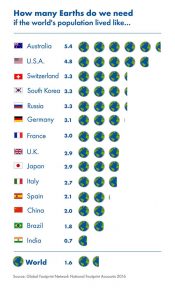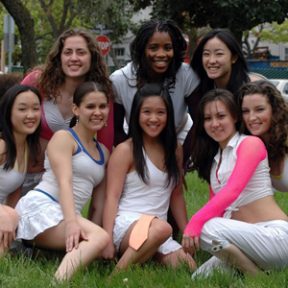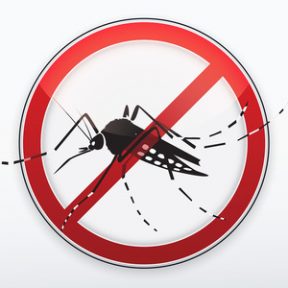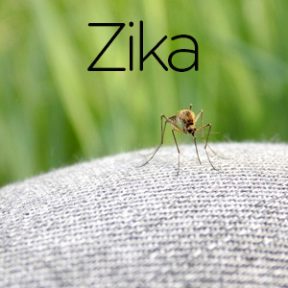It’s only August and the Global Footprint Society says that we’ve already used the whole year’s worth of resources! Oh no!
So what does that mean? When comparing our ecological footprint to our biocapacity, we’ve used the equivalent of one year (12 months) in just 7 months!
Watch this short video to see what’s happening and what you can do to help.

[Source]
It’s only August and the Global Footprint Society says that we’ve already used the whole year’s worth of resources! Oh no!
So what does that mean? When comparing our ecological footprint to our biocapacity, we’ve used the equivalent of one year (12 months) in just 7 months!
Watch this short video to see what’s happening and what you can do to help.

[Source]
 After Nicole danced with the Stanford Dollies in 2004-2005, she joined Urban Styles.
After Nicole danced with the Stanford Dollies in 2004-2005, she joined Urban Styles.
We have such fond memories of Nicole dancing with her Dollies: Megan, Lisa, Jessica, and Carrie on the Urban Styles team for many years after their Dollies year.
Faren and Annemarie from her No Limits competition team also joined Urban Styles. And for some trivia, Annemarie’s older brother and former No Limits dancer, Abe, started Urban Styles at Stanford back in the 1990’s. Small world!

 The Global Achievement Gap
The Global Achievement Gap
As a parent, you do what you can to prepare your children for college, and then ultimately, a successful career. Right? You search for the “best” schools that rank high and get kids into top colleges. Although you’re doing all the right things, you’re probably considering schools that are outdated because they are still teaching to the standardized tests. Yup! The curriculum emphasizes MEMORIZATION and COMPLIANCE in a new era where information is a click away.
Do our 11th graders really need to memorize the years each US president held office? Really? That just sucks up a huge part of your child’s brain capacity, which doesn’t leave time or energy to be innovative.
According to Tony Wagner, author of The Global Achievement Gap, there are 7 key skills that our youth needs to master to be successful in landing great jobs. Don’t wait for your schools to reform because it’ll take a few generations for them to get it right. As a parent, you can instill these qualities right at home. You can also have your children participate in ProjectMERIT, where they start a unique project that they organize and orchestrate on their own. I have all of my students and clients do these projects. Why? By giving them ownership of their project that they build from the ground up, they learn how to solve problems, communicate with business people, create a marketing plan, use social media to create a movement, and to think about major economic, environmental, and medical issues that they will inevitably face in the not-too-distant future. It really changes them from the inside out!
Here is Wagner’s list of things you can do at home to prepare your children for success in their careers:
- Critical Thinking and Problem Solving:
Give kids the opportunity to fix things that break at home and don’t hover while they do it. - Leading by Influence:
Let your kids advocate for themselves. Give them guidance but let them to do the work.
- Agility and Adaptability:
Demonstrate a “can-do” attitude when things go wrong. Enlist their help in finding solutions when things change. - Initiative and Entrepreneurialism:
Encourage your children to follow their interests that they can take to the next level.
- Effective Oral and Written Communication:
Involve your children in lively conversations and debates. Have them write letters to improve their written communication. - Accessing and Analyzing Data:
Demonstrate good research skills by showing your children how to find answers to any question and how to find reliable sources.
- Curiosity and Imagination:
Support your children’s curiosity by encouraging them to pursue answers or start projects. Buy supplies and take them places to further explore their interests.
Two-hundred thirty-five years ago, the United States was formed by pioneers who followed their passion for a better life. Only the strongest and most innovative people dared to cross vast oceans to arrive at a hostile place where they weren’t wanted. They became our founding fathers and led America to become the superpower it is today. But, after the Industrial Revolution, and then after the glory days post WWII, Americans have become passive.
We no longer have to work family farms and we have become accustomed to luxuries like nice homes, cars, and 40-hour work weeks. Kids no longer have to work in family-run businesses or farms so they have lots of leisure time. Thanks to the No Child Left Behind Act, students spend each year studying for standardized tests and memorizing useless facts that they could easily find on Google in a few seconds.
Because our students spend much of their precious time memorizing information and learning how to take standardized tests, they don’t have time to find solutions to problems big and small and use their brains to participate in innovative, creative, and exciting projects. It sounds to me like it’s time to make room in our children’s schedules to do something that will develop their initiative and entrepreneurial skills, and get their synapses in their brains firing again!
 Now that you’ve graduated from high school – YES! Congratulations! – and you’ve had the best summer ever (no summer reading assignments or summer school), you’re getting reading to close the living-at-home chapter in your life. While you love your parents and siblings, you’re really ready to live on your own and start your life as a full-time college student. I bet that sounds really good to you! And, unless you’re one of the very few students who get a single room during their freshman year, you’re probably wondering who this mystery roommate will be.
Now that you’ve graduated from high school – YES! Congratulations! – and you’ve had the best summer ever (no summer reading assignments or summer school), you’re getting reading to close the living-at-home chapter in your life. While you love your parents and siblings, you’re really ready to live on your own and start your life as a full-time college student. I bet that sounds really good to you! And, unless you’re one of the very few students who get a single room during their freshman year, you’re probably wondering who this mystery roommate will be.
Most colleges have you complete a survey to help them match you with a compatible roommate. They’re looking to see if you’re a night owl or if you get up at the crack of dawn, and possibly if you like country music or hip hop. While it would be ideal if they really used their surveys to place roommates together, don’t be surprised if your roommate is your polar opposite. It happens, but it doesn’t have to be a train wreck.
As freshmen, you’ll both be new on campus so you’ll probably eat your first meals together during orientation week until you make friends of your own. Don’t expect that your roommate will be your next BFF because you’ll most likely be very disappointed. Besides, the best roommates are neutral; people you get along with and respect, but don’t hang a lot of expectations on. This can help avoid unnecessary drama.
If you get your future roommate’s name and contact info, reach out by emailing or texting. Ask where they’re coming from, what their major is, and what sports or extracurricular activities they participate in. Another way to size them up is to check social media. Then ask if they plan to bring a microwave, fridge, fan, or other appliances that you might share. You can offer to purchase one if they purchase the other. It’s a good way to begin sharing and working together.
When you both arrive on campus, discuss which bed, desk and closet each of you will take before assuming one side is yours. They may show up with just a suitcase and a backpack, or they might bring a Martha Stewart collection of bedding, towels, and window coverings. As long as you both have designated sides of the room, you will be able to maintain your personal space and style. It’s good to establish this upon your arrival. Sharing space is usually not a good idea.
To ensure mutual respect, discuss basic roommate rules. Like “Fences make good neighbors,” rules make good roommates. I know most college students want to be easy-going and the thought of laying down roommate rules may seem over the top or unnecessary, but it’s inevitable that something they do (or you do) will irritate you (or them) and bringing it up later might cause a scene or create bad energy between you. Just by discussing both of your preferences ahead of time, you’ll probably never have to deal with the issues. It creates mutual respect and boundaries.
Here are some rules to discuss:
- What time should lights go out and music be off?
- What time is the earliest for us to make noise (cell phone, music, computer)?
- Should we keep our food separate? Should we have community food?
- How do you want to handle borrowing clothes, towels, toiletries?
- Do we want our room to be a social place where everyone congregates or a private place?
- What should we do if we invite someone to spend the night with us?
- How often is too often to have overnight visitors?
Heading off to college is both exciting and stressful. You’re going to experience new things, learn more about yourself, and make lots of new friends. A respectful roommate will ensure that you’ll have peace of mind and personal space when you need it.
 Now that Zika has arrived here in the US, know how to protect your family. The Zika virus can cause severe brain damage in newborns and may trigger nervous system disorders in adults. It is carried by mosquitoes in 30 states and can be transmitted through sexual contact.
Now that Zika has arrived here in the US, know how to protect your family. The Zika virus can cause severe brain damage in newborns and may trigger nervous system disorders in adults. It is carried by mosquitoes in 30 states and can be transmitted through sexual contact.
Use bug repellents when mosquitoes are present except on infants under 6 months. Here is a list of repellents:
Most Effective:
DEET (20-30% concentration)
Picaridin (20% concentration)
IR 3535 (20% concentration)
Less Effective:
Oil of lemon eucalyptus
Not Effective:
Vitamin B1 patches
Essential oils
Check the EWG website for more information about how to protect infants and children.
 Forget electronic calendars and school planners; your child needs the Merit Planner to start the school year ahead of the game!
Forget electronic calendars and school planners; your child needs the Merit Planner to start the school year ahead of the game!
Don’t spend exorbitant money trying to buy your child’s organization. All the binders, notebooks, dividers, and pencil holders in the world won’t make your child organized, and certainly won’t help them learn how to study. The only thing they really need is the Merit Planner. For tips on how to guide your child and get them started on top of their game this school year, check out this post and this post!
 We performed and produced “CATs” at Merit Academy twice, and we saw live performances in New York City, London, Reno, and Cupertino.
We performed and produced “CATs” at Merit Academy twice, and we saw live performances in New York City, London, Reno, and Cupertino.
Jaclyn was cast as the Rum Tum Tugger and loved the character – he was sassy, just like her!
When we saw the New York cast in Reno, she got to meet the “real” Rum Tum Tugger backstage. Jaclyn was ecstatic! After exchanging photos and letters with him – she was a fan — she got to meet the Rum Tum Tugger again at the Flynt Center in Cupertino.

 When my youngest daughter told me that she wasn’t sure she should go to St. Martin because she was worried about Zika, I was taken aback. She’s not married and she’s not planning on starting a family anytime soon, but still she was worried about how long the Zika virus might stay in her system.
When my youngest daughter told me that she wasn’t sure she should go to St. Martin because she was worried about Zika, I was taken aback. She’s not married and she’s not planning on starting a family anytime soon, but still she was worried about how long the Zika virus might stay in her system.
After meeting with her doctor, she was relieved to hear that getting bitten now will not harm her future (2 or more years out) baby. Phew! I was proud of her for checking into this before her trip and for making smart choices. Family planning in the age of Zika — like our twenty- and thirty-somethings don’t have enough to worry about!
Young couples who live Brazil and the Caribbean are having to make some tough decisions about having children. Women who are nearing the end of their reproductive years are especially stressed out because they may not have time to wait out this virus. Some have resorted to freezing eggs and embryos. Others are getting pregnant but moving abroad during the pregnancy.
Either way, it’s an expensive problem and many solutions are solely for the “haves” but not the “have nots.”
 Why one degree matters! Hate to be the bearer of bad news, but you need to wake up!
Why one degree matters! Hate to be the bearer of bad news, but you need to wake up!
When I hear people make snide remarks like “it’ll be nice for our winters to be a few degrees warmer!” while referencing CLIMATE CHANGE or GLOBAL WARMING, I lose my s**t. Even with the Paris Climate Change talks last year, some world leaders are either in denial or they’re controlled by Big Oil.
A shift of one degree is barely noticeable to human skin; but we’re not talking about human skin, we’re talking about the planet. One degree warmer for the planet is and will continue to cause devastation that we are all beginning to see now. One of my students forwarded me an excellent article that describes what will happen to the planet, and subsequently, human civilization, for every single degree that the planet warms. READ THIS:
0.5-1.0 Degree Warmer: (No chance of stopping this; we are already here)
Droughts = Deserts = Forest Fires
Melting ice caps – feedback loop – won’t be able to save the ice caps and glaciers
1.0-2.0 Degrees Warmer: (93% chance of stopping this IF we reduce greenhouse gases by 60% by 2026)
Saharan-type heat waves = kills hundreds of thousands
Mass migration away from equator
Fresh water supplies gone
Ecosystem collapse — 1/3 or species will face extinction
2.0-3.0 Degrees Warmer: (Little chance of stopping this once we reach 2 degrees because of carbon-cycle feedbacks)
Mass starvation (as soon as 2050)
Even more mass migration with starving people causing political and social upheaval
3.0-4.0 Degrees Warmer: (Little chance of stopping this once we reach 3 degrees because of runaway thaw of permafrost)
Millions of refugees flee to the coasts
Sea levels rise so coastlines and islands will be submerged
Permafrost thaw causes billions of tons of carbon to release into the atmosphere
Fires = dustbowls
World economy bust
4.0-5.0 Degrees Warmer: (Little chance of stopping this once we reach 4 degrees because of the release of trapped methane from the sea bed)
Ice sheets from both poles have vanished
No international aid; fight for survival
There’s more bad news but I don’t want to write it (read the article)
I blogged about this because we need to make substantial changes to stop CO2 from entering the atmosphere NOW.
To avoid our planet from getting 2 degrees warmer, we have 10 years to reduce our output by 60%. That means that we need to embrace an energy source that is 100% clean and we need to convert our internal combustion cars to use hydrogen NOW. My students are working on solutions that can divert our current collision course and I’ll be blogging about it in the next few months.
Get your head out of the sand and start reducing your carbon footprint today!
 I admit that I am not a good parker – it takes me 2 to 3 (or more attempts) to parallel park my little sports car, and I usually just drive around the block to find other parking options. Yup; I’m the stereotypical female Asian driver. And when I slowly back out of a parking space with my rear end jutting out into traffic, I panic because I can’t see what’s coming until I’m already causing near accidents. With giant SUVs and trucks lining parking garages, they create huge blind spots that are really dangerous. So that’s why I was so glad to read this article about backing into parking spaces.
I admit that I am not a good parker – it takes me 2 to 3 (or more attempts) to parallel park my little sports car, and I usually just drive around the block to find other parking options. Yup; I’m the stereotypical female Asian driver. And when I slowly back out of a parking space with my rear end jutting out into traffic, I panic because I can’t see what’s coming until I’m already causing near accidents. With giant SUVs and trucks lining parking garages, they create huge blind spots that are really dangerous. So that’s why I was so glad to read this article about backing into parking spaces.
It makes sense that if you’re having to jut out or do awkward maneuvers to get into or out of a parking space, it’s in your best interest to do it when backing into a space. After all, when you’re backing in, you can see the traffic around you. You can put on your blinkers and motion to people to go around you, then take your time to back your car into the parking space. You can see everything in all directions and it’s much safer to do than to back out into on-coming traffic that you can’t see.
Then, when you’re ready to leave, you hop into your car and pull out head first! Ta da! Studies says that Americans only back into parking spaces about 25% of the time, and the types of people who do that are usually high achievers who want to invest more time and effort (backing in) so they can appreciate delayed gratification later (quick and stress-free exit). Americans are never taught how to back into parking spaces when they take driver’s education and driving courses, while Europeans and Asians learn how to negotiate tight spaces on the road and in parking lots out of necessity.
My take-away from this is that we should back into parking spaces when it is legal (some parking lots post notices about how to park) because it will reduce your stress and probably save you from fender benders. With back-up cameras in most newer-model cars, backing into spaces is a piece of cake!
So if you see me on the street holding up traffic, smile — just know that I’m probably preventing an accident on the other end.
[Source]
http://www.vox.com/2016/8/1/11926596/safer-back-into-parking-spaces










